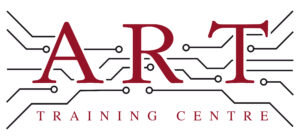Definition
Etching is a process used in electronics manufacturing to remove material from a surface, typically to create patterns on printed circuit boards (PCBs). This technique involves using chemical solutions or physical methods to precisely remove layers of metal or other materials. It is a crucial step in the production of PCBs, allowing for the formation of conductive pathways and components necessary for electronic devices to function properly.
How It’s Used in the Industry
Etching is applied in the electronics assembly process primarily during PCB fabrication. Initially, a protective layer is applied to the copper surface of the PCB. Next, the desired circuit pattern is printed onto this layer. The board is then exposed to an etching solution, which removes the unprotected copper, leaving behind the desired circuit design. This process is vital for ensuring precise connections and functionality of electronic devices. For technicians, understanding etching is essential, as it impacts the quality and reliability of the final product, making it a key topic in both training and professional development.
History & Origins
Etching became common in electronics manufacturing in the mid-20th century, particularly with the rise of printed circuit boards. The introduction of photolithography techniques in the 1960s allowed for more precise etching processes. As electronic devices became more complex, the need for standardised methods led to the development of guidelines, such as those from IPC (Institute for Printed Circuits). These standards helped ensure consistent quality and reliability in PCB production, making etching an integral part of electronics manufacturing.
Variations
There are several variations of etching used in electronics, including chemical etching, laser etching, and mechanical etching. Chemical etching employs acidic solutions to dissolve unwanted material, while laser etching uses focused light to vaporise material. Mechanical etching involves physical abrasion to remove layers. Each method has its advantages and is chosen based on the specific requirements of a project, such as precision, material type, and production volume. Understanding these variations helps technicians select the most appropriate technique for their needs.
Modern Applications
Today, etching is widely used in the production of both surface mount and through-hole components in electronics. It is essential for creating intricate designs on PCBs, which are crucial for modern electronic devices. Etching is also important in repair processes, where it can be used to fix damaged circuits. Compliance with IPC standards ensures that etching processes meet quality and reliability benchmarks, making it a vital aspect of professional training and practice in the electronics industry.
Practical Tips & Training
When working with etching, it is important to follow safety protocols, such as wearing gloves and goggles to protect against harmful chemicals. Inspecting etched boards for defects like under-etching or over-etching is crucial for quality assurance. Useful tools include magnifying glasses and inspection lights to ensure accuracy. Structured training and certification in etching techniques are valuable for both novice and experienced technicians, fostering a deeper understanding of the process and its impact on electronics manufacturing.


